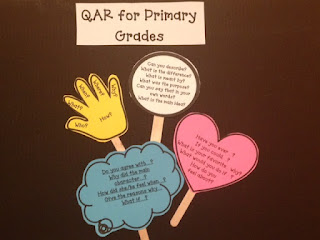I recently
facilitated a School Improvement Day for a friend that’s a principal of a K-6 building
with gen ed, dual language and gifted classes.
I presented on the CCSS shifts for ELA.
When we were planning for the SIP day, my friend suggested that I use
some of the research from Karen Beeman and Cheryl Urow’s book titled, Teaching for Biliteracy Strengthening
Bridges between Languages. Of course
I needed another book! This is a very
comprehensive and practical guide with strategies for building bridges to
biliteracy and the bridge from theory to practice. This would be an excellent text to read and
discuss because of the diversity in our classrooms.
In my research I found this
amazing site of the week!
The mentor mob from
the UK listed the 12 rules for Spanish cognates along with examples. Spanish
cognates are words from two languages that are the same or similar. What
intrigued me was this quote, “As English borrows many words from Latin there
are many Spanish-English cognates.
By learning a few set rules you will
have an instant Spanish vocabulary of thousands of words.” I just created a powerpoint using their
material. This presentation includes
each of the rules by themselves followed by the second slide that includes the
rule and the examples that I found on the Mentor Mob’s site. I thought the ‘rule’ slides could be posted
and the powerpoint could be used for instruction. It would make a great ongoing
activity for students to add new words that they find onto the charts. You can get the Spanish Cognate powerpoint
here.





